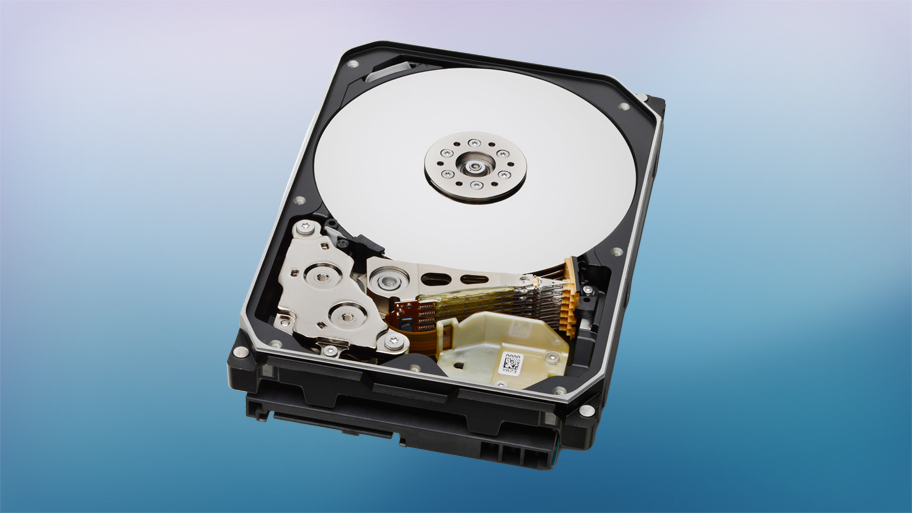Is the death of hard disk drives in the enterprise greatly exaggerated?
Core business applications like big data will continue to need HDDs

So when it comes to the enterprise world, is the hard drive really on its way out? We spoke to Barbara Murphy, vice president of marketing, Cloud Infrastructure Business Unit, HGST, about this issue and many others, including HGST's Active Archive System.
TechRadar Pro: Let's start with the key question which is the headline of this article – is the death of hard disk drives in the enterprise greatly exaggerated? And if yes, why?
Barbara Murphy: The short answer is yes. Enterprise IT is in a constant evolutionary lifecycle. What was once essential for running mission and business critical applications in the past, no longer applies to the demands of business today. While it is accepted that Flash will have significant penetration on traditional SAN systems, high capacity spinning disks will remain the storage of choice for broad cloud infrastructure.
Ultimately, core business applications like big data, data analytics, and content lifecycle demands will continue to drive the implementation of HDDs. Enterprise use cases which generate petabytes of unstructured data will continue to demand low cost, highly durable media solutions. HDDs are the only solution that can meet the cost point while maintaining instant access to data.
An innovative approach to HDD design and use will continue to bring economic and technical advantage to the enterprise. HGST's unique HelioSeal helium architecture helps to provide economic benefits for less than a penny per GB over the lifecycle of the system.
TRP: New technologies like Micron's Crosspoint, falling flash prices and better tape technologies are squeezing HDDs in the middle. What do you make of these alternative approaches to HGST's Active Archive System?
BM: Whilst storage needs continue to grow on a daily basis, the common challenge to these alternatives is that they are not widely supported. It will take widespread adoption before the cost of these systems becomes competitive.
Are you a pro? Subscribe to our newsletter
Sign up to the TechRadar Pro newsletter to get all the top news, opinion, features and guidance your business needs to succeed!
In Genomics, a single genetic sequencer generates several terabytes of raw data per single genome run. At this rate, it is expected that genomics will soon surpass YouTube in terms of the volume of data being created. Life Sciences sees cloud technology as a cost-effective solution to this problem. In fact, new sequencers can directly export test data via S3.
- HGST's Active Archive System object store has native support for S3. By contrast, the current FLAPE developments do not have either file or object interface. That limits its use to the SAN space which addresses only a tiny portion of the market.
- The software and storage services for alternative technologies lag far behind the basic technology, which in itself is unproven. Active Archive leverages well understood, proven technology (HDDs). Through erasure encoding, it delivers data durability several orders of magnitude beyond even tape. Geo data dispersion virtually eliminates the need to backup data.
- HGST's Active Archive System can more easily support multiple users needing random access and delivers a lower time to first data than tape.
- Tape drives and autoloaders are mechanical and subject to failure – does the autoloader support 15-9s? Data availability is only as good as the weakest link. Also, tape media is fragile and subject to damage through mishandling.
- Tape format changes require replacement of the media library, which means time and resource intensive data migration.
TRP: What makes HGST's Active Archive System different from the competition?
BM: Key differentiators of the system include:
- HGST's Active Archive System is based on Amplidata's leadership in object storage technology. Object storage supports the next generation data centre where users require rapid access to structured and unstructured data from a variety of locations across a variety of platforms.
- HGST owns the entire storage stack allowing us to optimise the Active Archive to take advantage of unique hardware and firmware capabilities.
- HGST's industry leading helium drive technology, which consumes only 1W/TB, represents a 300%-500% improvement over traditional air filled drives. The resulting opex savings means customers' TCO will be up to 70% greater than competitive solutions. This is important considering that data centre energy consumption is expected to increase 53% by 2020.
- Our proprietary rack design and full redundancy of critical components deliver greater storage density per square foot and greater data durability (15 – 9s) than competitive offerings.
- The Active Archive System was designed as a fully self-contained object storage system. Adding storage is as easy as rolling another rack into place and connecting it to the network. This translates into faster deployment, allowing IT to focus on new application development to drive revenue.
- Storage systems with similar capabilities can be architected using off-the-shelf components and software. However, this DIY approach requires time, testing and expertise that many businesses simply don't have in-house. These systems have to rely on triple replication to ensure data consistency, while the Active Archive System supports fully distributed erasure coding which is twice as efficient. Then consider the matter of support – you architected it and you built it, so you own the headaches of maintaining it, which translates into headcount required for 24x7x365 maintenance coverage and software development.

Désiré has been musing and writing about technology during a career spanning four decades. He dabbled in website builders and web hosting when DHTML and frames were in vogue and started narrating about the impact of technology on society just before the start of the Y2K hysteria at the turn of the last millennium.